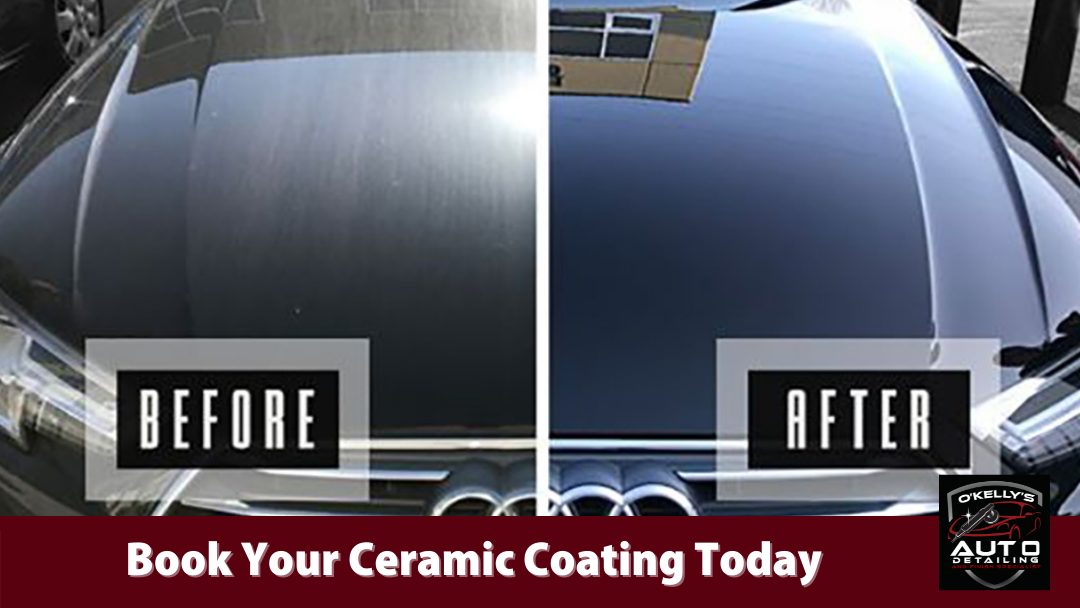How Ceramic Coating Philadelphia Guards Versus UV Rays and Ecological Damages
How Ceramic Coating Philadelphia Guards Versus UV Rays and Ecological Damages
Blog Article
Why Ceramic Finishing Is the Ultimate Solution for a Perfect End Up
Ceramic covering has emerged as a leading option for those looking for a perfect coating for their cars, thanks to its exceptional sturdiness and protective functions. What factors genuinely established ceramic finishing apart?
What Is Ceramic Finishing?

When used appropriately, ceramic finish develops a hydrophobic surface area that repels water and dirt, making it simpler to clean up and keep. Unlike conventional waxes or sealers, which usually use brief protection, ceramic finishings can last for numerous years, depending upon the item top quality and application technique. The procedure of applying ceramic finish requires careful prep work, consisting of complete cleansing and occasionally repaint adjustment, to make sure ideal bonding and effectiveness.
Ceramic finishes are not limited to auto surfaces; they can likewise be used on different products, including glass, metal, and plastics, offering a functional service for improving defense. In general, ceramic coating stands for a significant innovation in surface area protection innovation, integrating both useful and aesthetic benefits for a large array of applications.
Advantages of Ceramic Finishing
While several surface area protection options exist, the benefits of ceramic layer attract attention due to its special buildings and long-lasting performance. One of the main benefits is its phenomenal resilience. Ceramic Coating Philadelphia. Unlike conventional wax or sealers that require regular reapplication, ceramic finishings supply a resistant layer that can last for several years, considerably decreasing upkeep efforts
One more remarkable advantage is improved security versus ecological contaminants. Ceramic finishes create a hydrophobic surface that pushes back water, dirt, and various toxins, making it less complicated to clean up. This attribute not only maintains the automobile's appearance however also reduces the threat of rust and oxidation, especially in harsh climate condition.
Additionally, ceramic finishings use superior resistance to UV rays, protecting against fading and destruction of paint in time. This UV defense is critical for keeping the visual worth of cars and surfaces exposed to direct sunshine.
Additionally, the glossy surface achieved with ceramic finish enhances the overall visual charm, providing surfaces a showroom-quality luster. In general, ceramic coatings stand for a significant innovation in surface protection modern technology, offering long-lasting advantages that satisfy both visual and practical demands.
Just How It Functions
Recognizing the science behind ceramic layers reveals just how they give such exceptional protection and longevity. At its core, a ceramic covering is a liquid polymer that chemically bonds with the automobile's factory paint. This bonding produces a protective layer that is both oleophobic and hydrophobic, repelling water, dust, and oil. The main part of many ceramic layers is silicon dioxide (SiO2), which is originated from quartz. This substance adds to the finish's firmness and resistance to scrapes, UV rays, and environmental pollutants.
The application procedure entails several steps, consisting of surface prep work, which is crucial to achieving ideal bond. When applied, the layer undertakes a treating procedure, during which it hardens and creates a semi-permanent bond with the paint surface go now area. This bond is what distinguishes ceramic finishes from traditional waxes and sealers, supplying a longer-lasting safety obstacle that can withstand for years.
Furthermore, the thickness of the coating can improve its safety top qualities, making sure that it can endure harsh problems. Inevitably, the science of ceramic layers combines innovative materials with cutting-edge application strategies to provide an exceptional degree of defense and aesthetic enhancement for cars.
Comparison With Standard Approaches
When contrasted to typical paint defense techniques such as sealants and waxes,The advantages of ceramic coatings become specifically evident. While waxes provide a short-lived shine, commonly lasting a few weeks to a couple of months, ceramic coatings supply a lasting protective layer that can withstand for several years. This durability considerably lowers the frequency of reapplication, making ceramic finishes a more economical solution in time.
In addition, traditional techniques commonly call for comprehensive preparation and several applications to achieve a satisfying degree of defense. In comparison, ceramic layers bond at a molecular level with the vehicle's surface, creating a durable shield against environmental pollutants like UV rays, acid rain, and road salts. This bond boosts the lorry's resistance to scrapes and swirl marks, which are common with conventional waxes and sealers.
Furthermore, the hydrophobic residential or commercial properties of ceramic coatings fend off water and dirt, bring about much easier cleaning and maintenance. In comparison, wax and sealant-treated surface areas can draw in crud, requiring even more constant cleaning - Ceramic Coating Philadelphia. In general, ceramic coverings not only offer premium protection but likewise supply a much more aesthetically appealing and long-lasting surface, establishing them as the recommended option for discerning lorry owners
Application and Maintenance Tips

Making use of a foam applicator, apply the covering in tiny sections, following the manufacturer's standards regarding thickness and overlap. Allow enough healing time between coats, commonly 24 hours, to ensure correct bonding. After application, it is critical to prevent exposure to water or rough components for a minimum of a week to permit the finish to fully treat.
Additionally, utilizing a ceramic upkeep spray can enhance the finish's hydrophobic properties and durability. Normal assessments for any kind of signs of wear will help preserve the covering's integrity and protect that immaculate finish.
Verdict
In conclusion, ceramic layer emerges as an exceptional alternative for accomplishing a perfect automotive surface. By developing a robust bond with factory paint, ceramic covering successfully guards against scrapes, UV rays, and ecological his comment is here contaminants.

Report this page